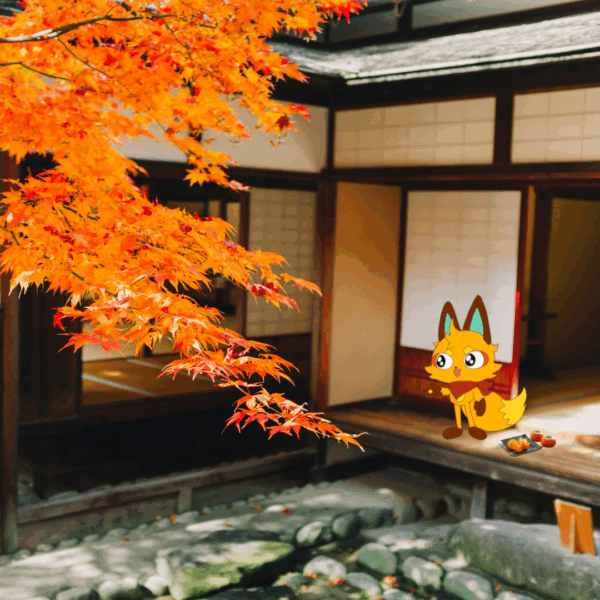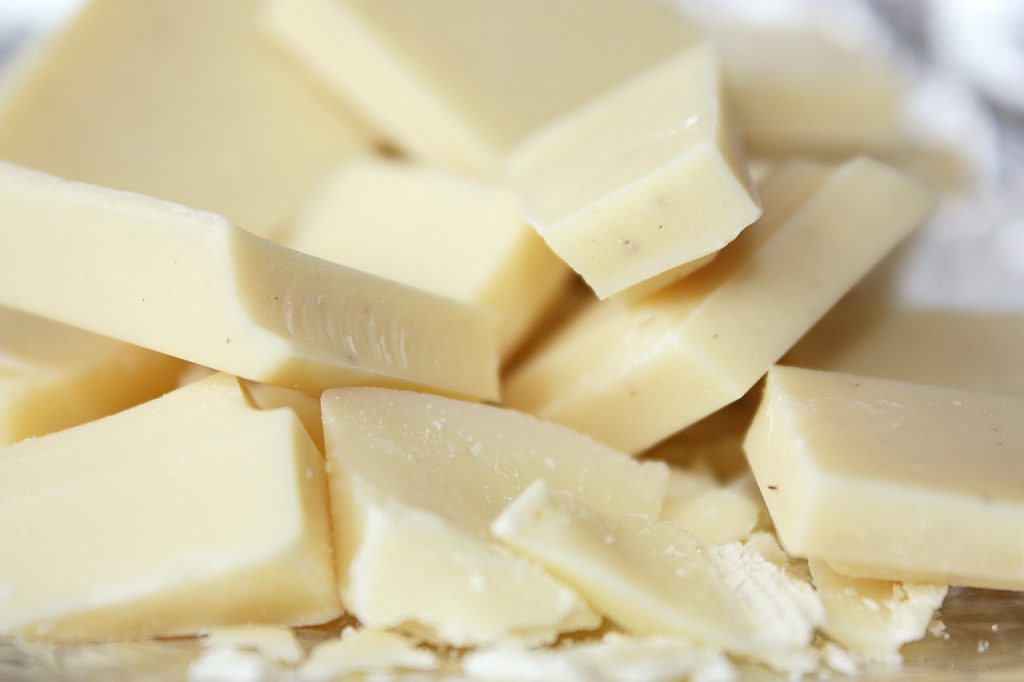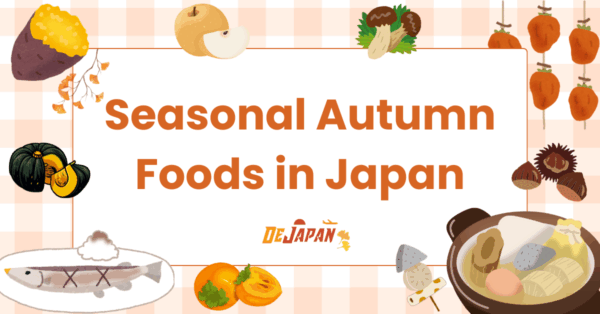
Fall is one of the most aesthetically recognizable seasons out there. The leaves turn striking shades of burnt orange and vermillion, the fragrant smell of cinnamon wafts in the air, and pumpkins litter every open surface in sight. It’s a magical time of year for many of us.
Not to mention the FOOD! We all know pumpkin spice, cinnamon, and maple rule the fall flavor profiles in the West, but in Japan…it’s a different story.
Japan as a culture greatly values seasonality, and that allows Japanese people to enjoy the fall season just as much as their Western counterparts—but in a distinctly Japanese way. No maple or cinnamon here!
In Japan, there’s this concept called Shokuyoku no Aki (食欲の秋), which literally translates as “autumn appetite.” Although closer to meaning something like, “the season of appetite,” fall is the season of abundant harvests and rich, hearty flavors. Pair this with cooling temperatures, and you’ve got the perfect conditions for an increased appetite.
Seasonal Autumn Foods in Japan
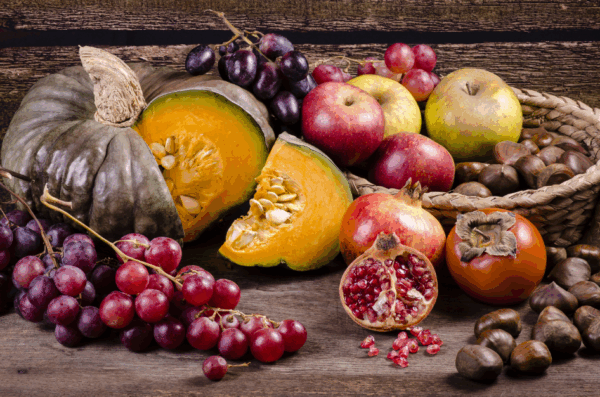
We know you may not be able to experience autumn in Japan directly, but you can definitely get a taste of that Japanese fall appetite, no matter where you live! We’ll share some of the top autumn foods and flavors in Japan so you can enjoy fall the way they do in Japan.
Asian Pear (Nashi 梨)
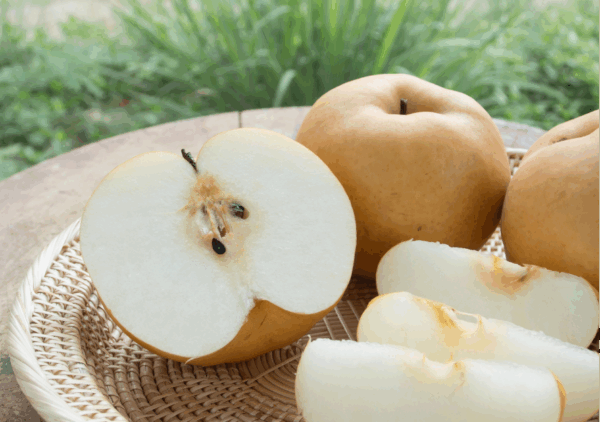
Pears may not immediately invoke nostalgic “autumn” feelings in your mind, but Asian pears (called nashi in Japanese) are one of Japan’s many prized fruits of the season. But don’t confuse them with the teardrop-shaped variety. Nashi are rounder in shape, and almost resemble apples.
Rather than waiting for them to soften, Japanese people tend to enjoy these pears when they’re still firm and crisp. Sweeter and just a tad juicier than apples, you may find them featured in seasonal pastries and desserts. But most of the time, they’re eaten simply—peeled and sliced, either on its own, or atop a green salad or elegant parfait.
Chestnuts (Kuri 栗)
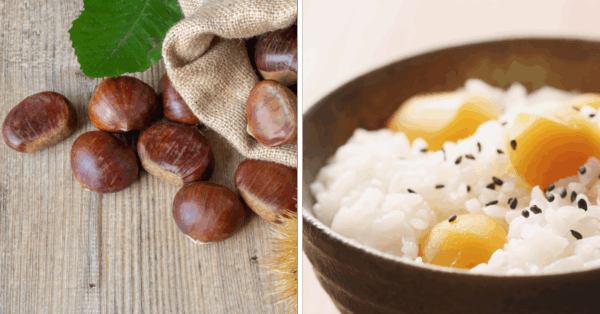
Chestnuts are the flavor of choice when it comes to both savory and sweet autumn dishes. They’re soft, a little nutty, and have been a staple in the Japanese diet long before rice was.
You can enjoy kuri in a myriad of ways, from the savory kuri gohan (chestnuts with rice), to sweet treats like the Mont Blanc cake from France, kuri manjū, kuri yōkan jelly, or even Mont Blanc-flavored KitKats! Or simply enjoy them roasted for that toasty, earthy taste.
**DEJAPAN Tip**
In desserts, chestnuts are often called by their French name, “marron,” instead of “kuri.”
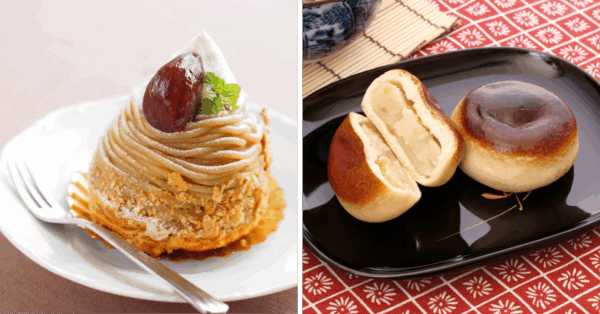
Find shippable kuri goodies below!***
- Kuri yōkan jelly
- Mont Blanc KitKats
- Peeled and roasted chestnuts (むき甘栗)
- Chiikawa Kurimanju character goods
***We reserve the right to cancel any orders that may be prohibited from current shipping regulations, including but not limited to: raw food, perishable foods (not shelf-stable), foods that require special shipping and handling conditions (refrigerated/frozen foods), etc.
Kabocha Squash/Japanese Pumpkin (Kabocha 南瓜)
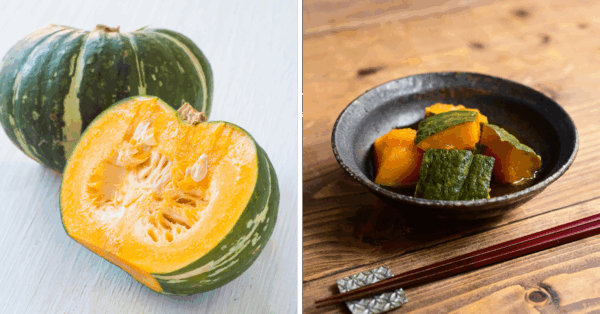
Of course pumpkin would have to appear on this list somewhere! Although this isn’t the soft, orange variety you might be used to. Closer to our image of squash, kabocha (Japanese pumpkin) is sweeter and denser than classic pumpkin, and the skin is edible.
Unfortunately, pumpkin spice and pumpkin-based desserts still haven’t really taken off in Japan the way it has out West (looking at you, United States). That being said, there are plenty of savory dishes that showcase the tasty, golden goodness that is kabocha—from creamy soup and fluffy croquettes, to the more traditional dishes like tempura and braised kabocha. It’s truly a favorite ingredient in Japan, no matter the season.
Matsutake Mushrooms (Matsutake 松茸)
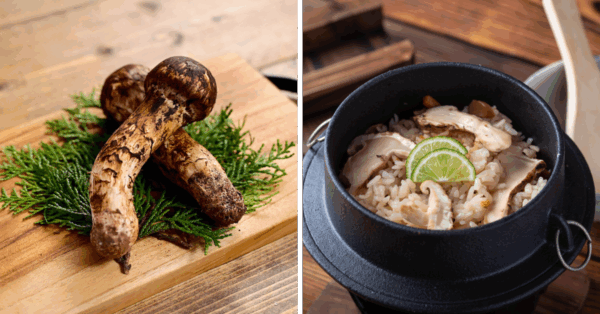
Mushrooms in general are a popular autumn food in Japan, but nothing beats the matsutake mushroom. Earthy, rich, and meaty, the matsutake mushroom cannot be commercially grown. To be a true matsutake, it must be foraged from the wild in highly specific conditions. And with several lookalike mushrooms out there, they’re not easy to find. As such, it’s known for its rarity and high price tag (as much as 100+ USD for 1 mushroom!).
If you are able to snag some matsutake for your dining pleasure, you can enjoy them the Japanese way by making matsutake gohan (rice cooked with matsutake), or simply grill or roast them with a little soy sauce and lemon. Keep it simple so the unique, fragrant taste of the mushroom remains the main focus.
Oden Hotpot (Oden おでん)

If stews and warm roasts are the warm, comfort food enjoyed in the West during the cold season, then oden would be the Japanese equivalent. Although not specifically an autumn dish, oden is a popular go-to when the weather turns cold.
With a dashi soup base, you’ll find all sorts of ingredients simmering and boiling in a pot of oden: slices of tender daikon, chewy konnyaku (konjac starch cake), soft or hard boiled eggs, mochi pouches, and a variety of fish cakes. Sometimes you’ll find potatoes and meat swimming in the mix, too.
Oden can be personalized however you like. So long as it’s hearty and filling in the end, that’s all that matters!
**DEJAPAN Tip**
In my experience, adding a bit of miso (fermented soybean paste) or karashi mustard as a condiment can really amp up the umami/spice profile. Don’t be afraid to experiment with condiments to easily upgrade your oden.
Pacific Saury (Sanma 秋刀魚)
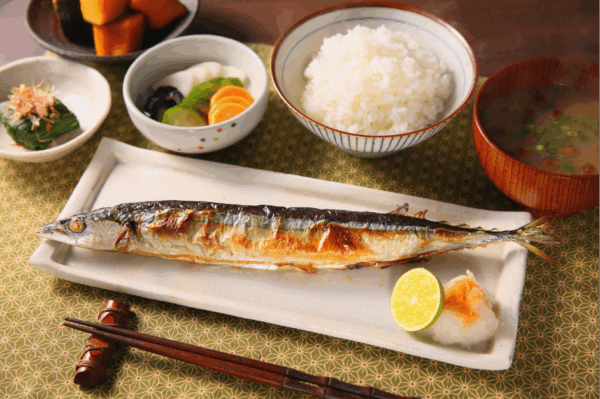
When you think about seasonal foods, most people think of fruits and vegetables, but in Japan, fish and seafood also have a seasonality to them. And nothing screams “autumn” like sanma.
Sanma, or pacific saury, is a fish that, though technically available all year round, is tastiest in the fall when their fat content is the highest. Typically, they’re grilled whole, and served with a little salt, lemon/yuzu, grated daikon radish, and soy sauce. Although in my experience, you can take a shortcut and eat it with just the grated daikon and a dash of ponzu sauce.
They’re so popular, it can be quite the battle trying to get your hands on them at the supermarket. It’s best to stock up on them as soon as they’re available if you want in on the sanma goodness.
**DEJAPAN Tip**
For a truly authentic experience, be sure to eat all the guts inside, too. They’re a little bitter, but Japanese people love that extra depth of flavor.
Persimmons (Kaki 柿)
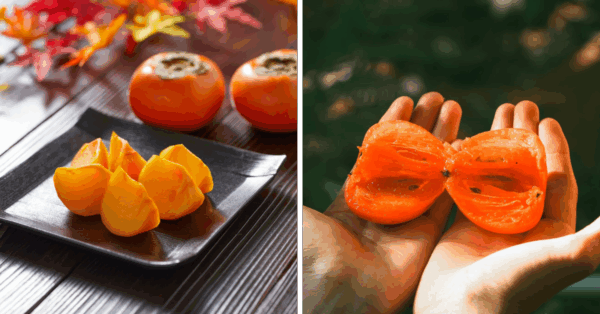
While many in the West may feel a little unfamiliar with persimmons, many Asian communities have actually long-known (and enjoyed) the wonderful, delicate sweetness of this fruit. Called kaki in Japan, there are two main varieties, each eaten in different ways: fuyu and hachiya.
Fuyu persimmons are typically eaten raw—skins peeled and cut into wedges for easy sharing. They’re sweeter, and have a satisfyingly crispy bite to them. You can also eat them when they’re overripe and soft. With almost a jam-like consistency, they feel more like dessert than a fruit.
Hachiya persimmons, on the other hand, tend to be a bit more astringent and bitter. As such, Japanese people tend to use these to make dried persimmons called hoshigaki. They peel the skins off, string them up outside their house, and let the persimmons naturally sweeten up as they dry. It’s a lengthy process, but it certainly bears some tasty fruit (if you’re into the dried fruit thing, anyway).
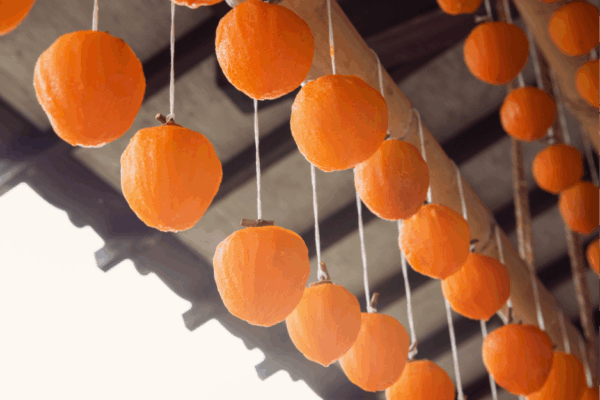
**DEJAPAN Tip**
While you can buy dried persimmons in the supermarket, they tend to be quite expensive for the small amount you get. Unless you dry your own hoshigaki, it’s best to treat them as more of a delicacy if your wallet is on the tighter side.
Sweet Potatoes (Satsuma-imo さつま芋)
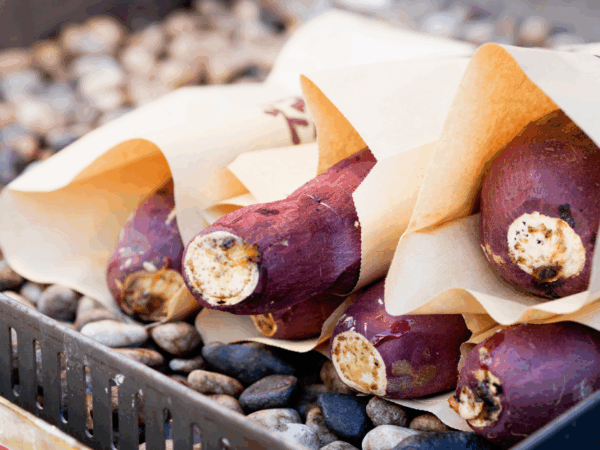
You know it’s fall in Japan when the smell of roasted sweet potatoes is in the air. Unlike the orange variety popular in the West, Japanese sweet potatoes (called satsuma-imo) are generally deep fuschia on the outside and a warm golden shade on the inside.
Roasted sweet potatoes, called yaki-imo, are by far the most popular form of eating this delectable starch. It’s always a treat when you stumble upon a yaki-imo stand or truck during an autumn walk. But you can also grab one (or two!) easily from most supermarkets, provided that they’re in season.
Aside from yaki-imo, there are plenty of other sweet potato sweets and snacks during this season, from mochi to pastries, to ice cream and even doughnuts! And if you’re looking for something more traditional, daigaku-imo (candied sweet potatoes) or imo-kenpi (fried sweet potato sticks) are always good standbys.
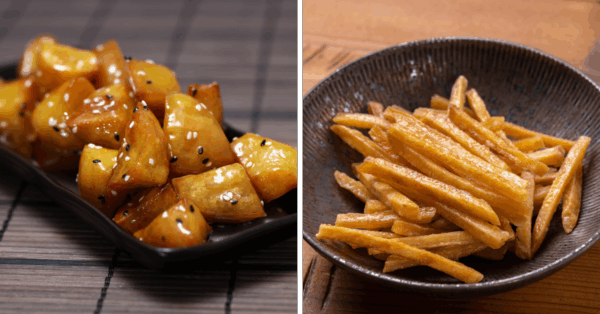
Find shippable satsuma-imo sweets below!***
***We reserve the right to cancel any orders that may be prohibited from current shipping regulations, including but not limited to: raw food, perishable foods (not shelf-stable), foods that require special shipping and handling conditions (refrigerated/frozen foods), etc.
BONUS: Apples! (Ringo 林檎)
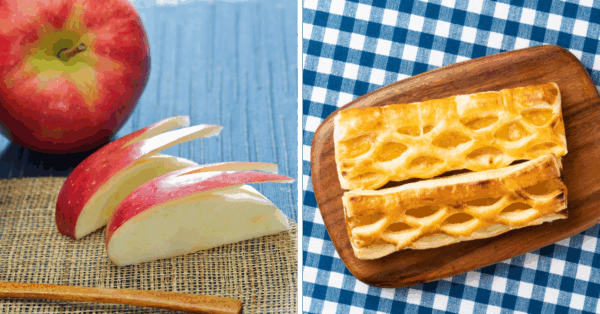
Apples are perhaps the one thing that Japan and the West have in common when it comes to “autumn foods.” Apples (or ringo in Japanese) are actually not native to Japan; they were originally brought over from the United States in 1865. But even so, apples continued to grow in popularity, and now there are over 2,000 varieties grown in Japan alone (including the famous Fuji apple). Aomori and Nagano prefectures are the most famous for their consistently delicious (and enormous) apples.
While there’s still no sign of hot, spiced apple cider in Japan (I’m still troubled by this), it’s a comfort to know that apple pie is a favorite dessert here in Japan. You can find some version of this pie available in most bakeries and pastry shops (either as a hand pie/strudel or as the traditional pie slice).
**DEJAPAN Tip**
If you make your way out to Japan, there’s actually an apple pie specialty chain called Granny Smith Apple Pie & Coffee. With several stores across the country (including 7 in Tokyo and 1 in Kyoto) you can enjoy Japan’s unique take on apple pie with an assortment of special flavors to choose from. Try the Dutch Crumble for that classic cinnamon taste, or try something new like the Rum Raisin or the England Custard apple pies.
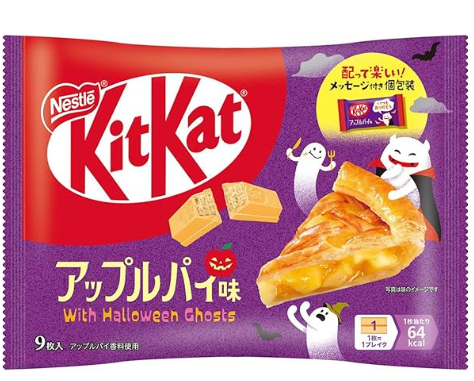
If you’re looking for something other than pies, Japan boasts plenty of other apple goods: apple jelly, apple vinegar, apple butter, apple juice, and even apple pie-flavored KitKats! Or, if you want to appreciate the fresh crisp of raw apples, try cutting up a giant apple into bunny-shaped slices and share with a friend! It’s whimsical and tasty! 🐰🍎
Check out our “How to Eat Apples: Japan vs. the West” video below and on YouTube!
Conclusion
We know that it’s not always possible to come out to Japan to enjoy all the autumn seasonal foods and treats. If you’re able to visit Japan in October or November, more power to you! But for those who can’t, take comfort in knowing that you can still enjoy Japanese autumn wherever you’re at!
Although the sanma fish might be a little tricky to find, you should be able to find most of the fruits and vegetables in your local supermarket if you’re in a more populated area. Otherwise, check out an Asian grocery store near you. They’ll have all the fish cakes and ingredients needed to make oden yourself, plus any produce that you couldn’t find in the regular supermarket.
And for all the tasty specialty snacks? You can order these through DEJAPAN! Feel free to submit an order for any of the products featured here (or anything else) via our Request Form.
If you have any questions or feedback, feel free to contact us at contact@dejapan.com! We’re always happy to hear from you! 😊
Have a wonderfully cozy autumn season! 🍂
